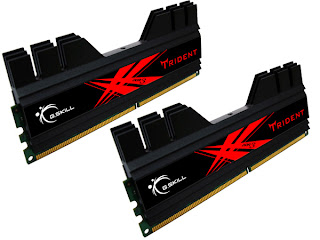Random access memory, or RAM as it is popularly known is one of the most integral components of a computer system or electronic device. RAM is mostly used in computers, but even devices like printers, mobile phones and the like use it. It is a volatile type of memory and involves continuous exchange of data. Data that needs to be processed and utilized quickly is stored in the RAM modules. With respect to computers, the first RAM modules were introduced in the 1950′s and have evolved to possess much greater capacities over the years. There are various types of RAM modules like SDRAM, DDR SDRAM, DDR2 RAM and the newest, DDR3 SDRAM. All of these modules differ with respect to the frequency with which data can be written and accessed. Needless to say, their capacities have increased as well.
SDRAM stands for single data rate random-access memory and DDR SDRAM stands for double data rate synchronous dynamic random-access memory. As the name suggests, DDR was an evolution of SDRAM and allowed higher data transfer rates and at a certain clock frequency had double the data bandwidth of SDRAM. Furthermore, newer evolutions of RAM modules operated at lower voltages and were thus more power efficient. Like most such components, RAM modules are not backward or forward compatible.
SDRAM was available in clock frequencies ranging from 66-133Mhz, DDR SDRAM was available in frequencies ranging from 100-200Mhz and operated at 2.5v, DDR2 SDRAM is available in frequencies ranging from 200-533MHz, operates at 1.8v and DDR3 SDRAM is available in frequencies ranging from 400-1066MHz and operates at 1.6v.
Along with these classifications, RAM modules are available in low and high density types. Not all motherboards support high density RAM modules, most support low density RAM modules. Contrary to what the name suggests, “high density” RAM modules do not provide any performance gains, and in fact might perform worse on most motherboards that support only low density RAM modules. For example, a 1GB low and high density RAM module consists of 8 chips of 512Mb on each side for a total of 16 chips. These are arranged in the form of (512Mb x 16)/8 bits which gives 1024Mb or 1GB. In low density modules, each chip is organized with 64M bits with a data width of 8 bits, this is commonly expressed as 64M x 8 configuration. In high density modules, the same arrangement is seen, but each chip is organized with 128M bits with a data width of 4 bits.It is expressed as 128M x 4 configuration and is called high density.

RAM modules are in the form of DIMM’s or dual inline memory modules. It is a series of integrated memory circuits on a printed circuit board. These circuit boards with the memory IC’s are collectively called RAM sticks. Every iteration of RAM modules ranging from SDRAM to DDR3 SDRAM are connected to motherboard DIMM slots and are recognized by different number of pins on one end. For example, DDR and DDR2 SDRAM are available in 200-pin DIMM configurations and DDR3 SDRAM is available in 240-pin DIMM configuration. For smaller devices like laptop computers, mini ATX computers, high end printers and networking devices, RAM modules are available in SO-DIMM type. SO-DIMM stands for small outline dual in-line memory module. Similar to usual DIMM’s, SO-DIMM’s also come with different pin configurations.








0 comments:
Post a Comment